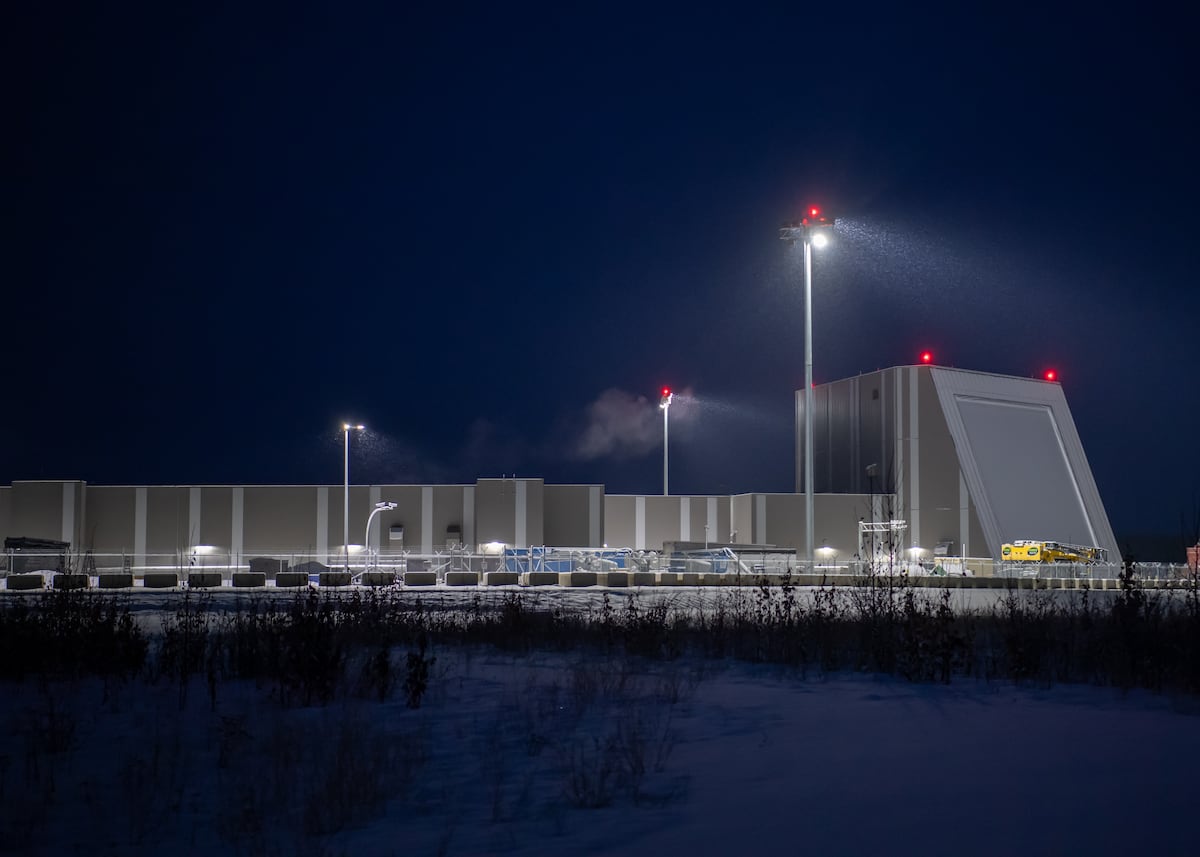

After a delay of nearly two years, the Missile Defense Agency has declared a successful test of its Long-Range Discrimination Radar’s ability to track a live ballistic missile target.
In a June 23 test, the LRDR at Clear Space Force Station, Alaska, “successfully acquired, tracked and reported missile target data to the Command and Control Battle Management and Communications (C2BMC),” according to a recent MDA announcement. “This was the radar’s first flight test tracking a live Intercontinental Ballistic Missile (ICBM) representative target.”
The target was air launched over the northern Pacific Ocean, according to MDA, and flew over 2,0000 kilometers (roughly 1,243 miles) off the southern coast of Alaska.
Tracking data from LRDR as well as the Upgraded Early Warning Radar, also at Clear Space Force Station, was sent to the Ground-Based Midcourse Defense system as part of the simulated engagement, the agency said.
The key test was rescheduled after the original was halted in 2023 due to a “target anomaly,” Missile Defense Agency Director Lt. Gen. Heath Collins told Defense News in an August 2024 interview. “We did do a track [exercise] the next month with another target that was … not as complicated a target set and it worked very well,” he said.
The agency’s biggest concern was to get the radar into operations faster following a series of other delays — including the coronavirus pandemic — leading up to its initial fielding in December 2021.
MDA had to stop all construction and integration activities for LRDR when the coronavirus began spreading in the U.S. in March 2020. The program went into “caretaker status,” meaning just a small group stayed at the site to ensure the materials were protected from the elements.
The successful test will now inform a decision to add it into the operational baseline for ballistic missile defense of the homeland. Formal operational acceptance of the LRDR by the U.S. Space Force was planned to occur by the end of 2023 prior to the canceled 2023 test event.
Once fully operational, the Lockheed Martin-developed LRDR will be able to simultaneously search and track multiple small objects, including all classes of ballistic missiles at long ranges under continuous operation and will be tied into the GMD system and the C2BMC system.
The GMD architecture is designed to protect the continental U.S. from intercontinental ballistic missile threats from North Korea and Iran.
Beyond missile defense, LRDR will also support space domain awareness by monitoring space activity like satellites orbiting the earth, spent rocket bodies and fragmentation debris. And while not an official requirement, a software upgrade could give LRDR hypersonic weapon detection and tracking capability.
Jen Judson is an award-winning journalist covering land warfare for Defense News. She has also worked for Politico and Inside Defense. She holds a Master of Science degree in journalism from Boston University and a Bachelor of Arts degree from Kenyon College.







-3.png)



